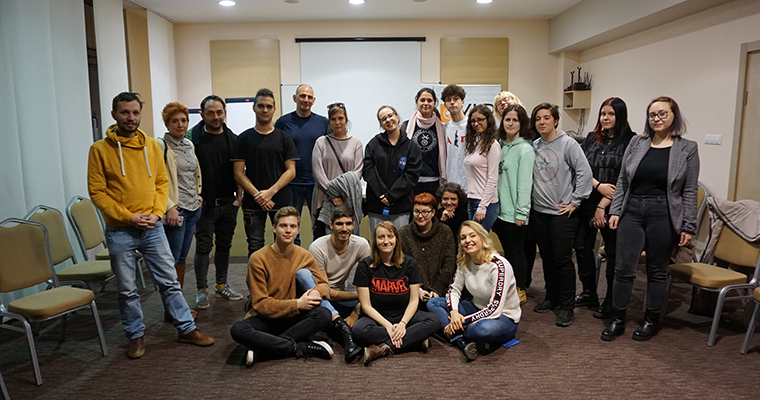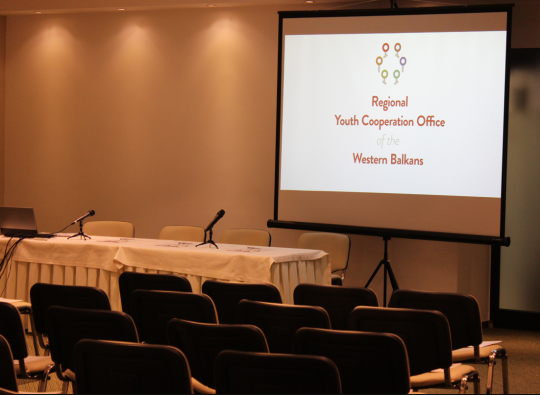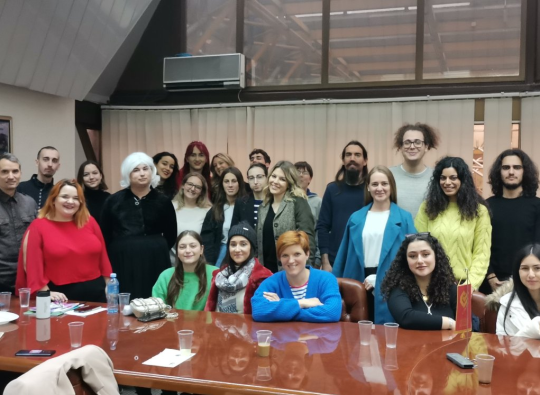The first day of the study visit began at the YIHR office, where Dušan Jovanović gave a lecture about the genocide in Srebrenica to the participants from Novi Sad, Zrenjanin, Vrnjačka Banja, Čačak, Pančevo and Belgrade.
In the first part of the lecture, the participants had an opportunity to learn more about the beginning of the war in Bosnia and Herzegovina, the ethnic structure of Bosnia and Herzegovina before and after the war, and the policies that led to the Srebrenica genocide. The second part of the lecture focused on the role of international community and the events in and around Srebrenica in July 1995.
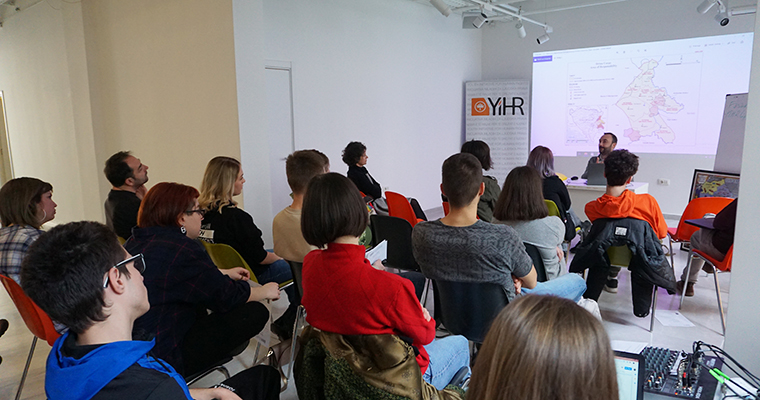
During the lecture, the participants were shown a series of documents and videos testifying to the genocide which were used before the International Criminal Tribunal for the Former Yugoslavia (ICTY), for which Jovanović stressed that they are authentic and both the defense and the prosecution accepted them as authentic. The participants showed great interest in this lecture and their questions sparked the discussion about this topic.
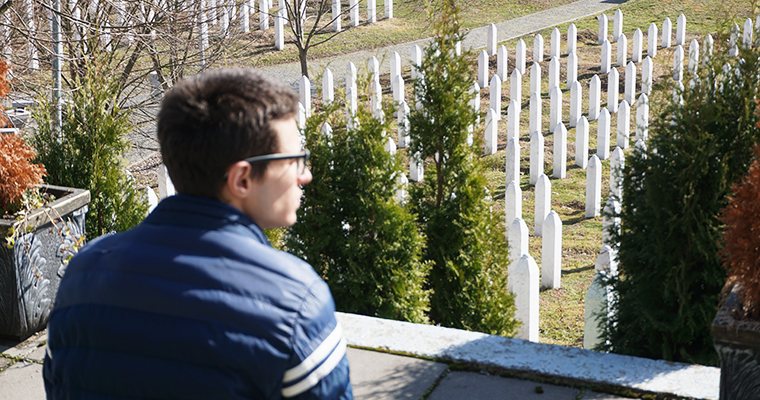
On the second day of the study visit, the group had the opportunity to visit the Srebrenica Potočari Memorial and the cemetery where the genocide victims are buried. There, they laid flowers on the monument of the Srebrenica victims with the message “Too Young to Remember, Determined Not to Forget”.
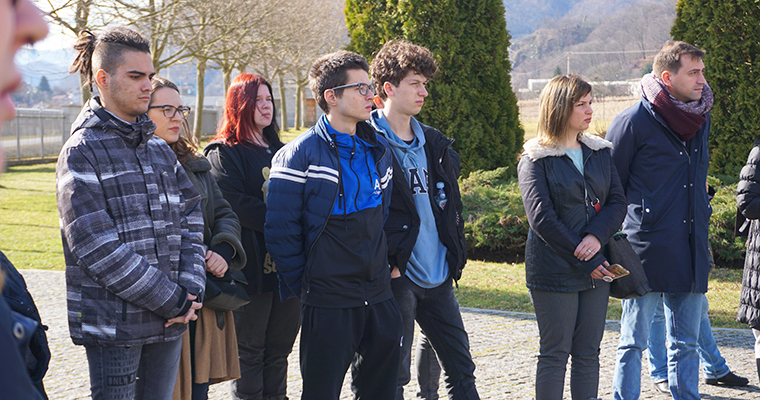
Azir Osmanović, curator at the Srebrenica Potočari Memorial then guided the group through Tarik Samarah’s photo exhibition documenting the genocide in Srebrenica through several segments: the killings, the excavation of bodies from mass graves, the identification of victims, the burial of the murdered on July 11 and the pain of families who lost their loved ones.
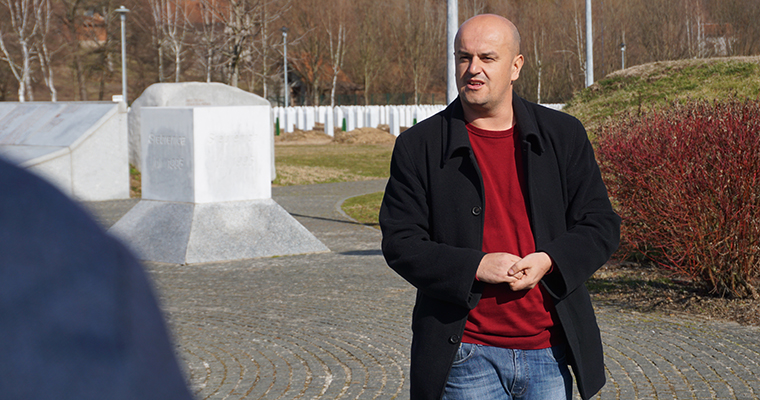
At the Memorial, the participants also had the opportunity to visit former battery factory which served as a headquarters of the Dutch UN Battalion before and during the Srebrenica genocide. On July 11 1995, nearly six thousand women, children and the elderly were accommodated at the factory which today serves as a memorial room displaying photos, videos and personal stories to remind of the victims of genocide in Srebrenica through.
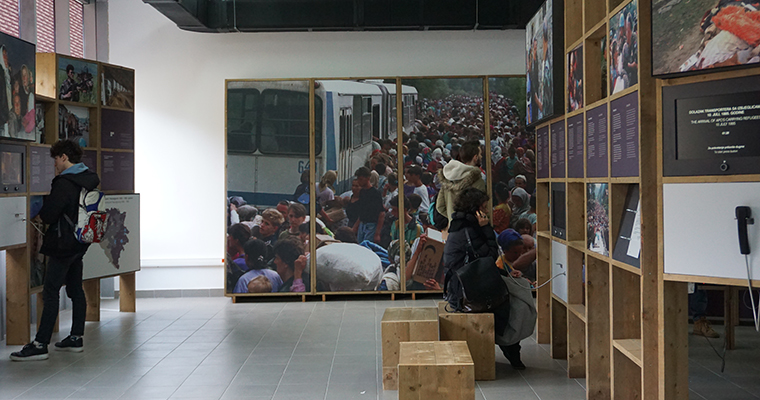
At the very end of the tour of the Srebrenica Potočari Memorial, Osmanović presented to the participants a historical context of the genocide in Srebrenica. After that, the group watched a documentary “One Week in July” and saw the exhibition of the failure of international community to prevent the genocide in Srebrenica. “One Week in July” gives a chronological overview of the facts around the Srebrenica genocide from July 11 until July 17 1995 through the testimonies of victims and their families before the ICTY and contains video recordings from Srebrenica after its fall and the entry of the Republic of Srpska Army into the town.
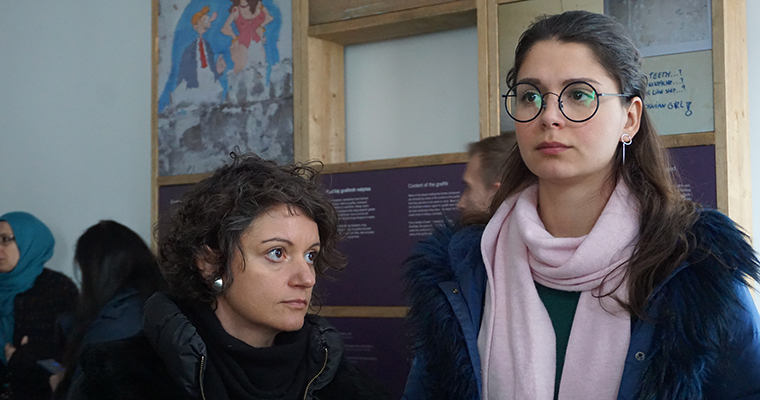
On the third and last day of the study visit, Jovana Kolarić from the Humanitarian Law Centre gave a lecture about Šljivovica and Mitrovo Polje. After the fall of Srebrenica in July 1995, these two locations served as detention camps for Bosniaks who managed to escape genocide and transfer to the territory of Serbia. They believed that Serbia would protect them since it was not officially in the war and that they would easier get to some foreign third country and obtain a refugee status there.
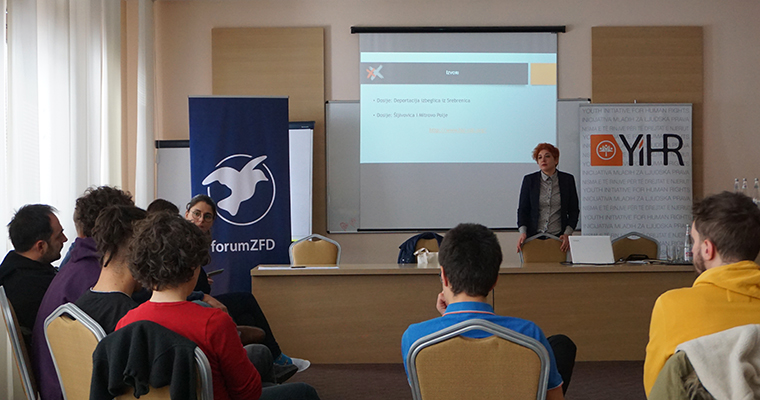
After the command of the Army of Bosnia and Herzegovina and the civilian authorities of Žepa signed a capitulation agreement with Ratko Mladić on July 27 1995, men fit to serve army tried to cross the Drina River and get to Serbia. Part of them failed and immediately after entering Serbia, they were caught by the border battalion of the Yugoslav Army and transferred to the primary school in Jagoštica and to the building of the Bajina Bašta police. In the course of 1995, commander of the 16th Border battalion of the Yugoslav Army was General Ljubiša Diković, until recently the chief of the General Staff of the Serbian Armed Forces.
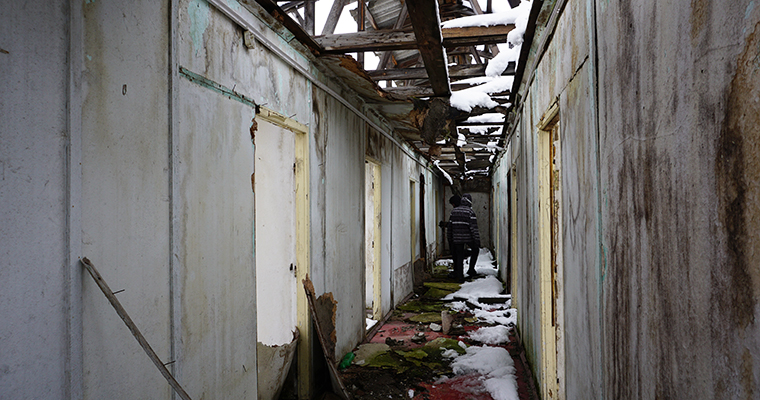
After the torture they survived there, they were transferred by trucks to Šljivovica, Čajetina municipality, where a detention camp existed since August 1995. The camp was closed as late as in April 1996. 350 prisoners passed through the Šljivovica camp. They were psychologically and physically abused, primarily by the members of the Ministry of the Interior of Serbia. Three of them passed away.
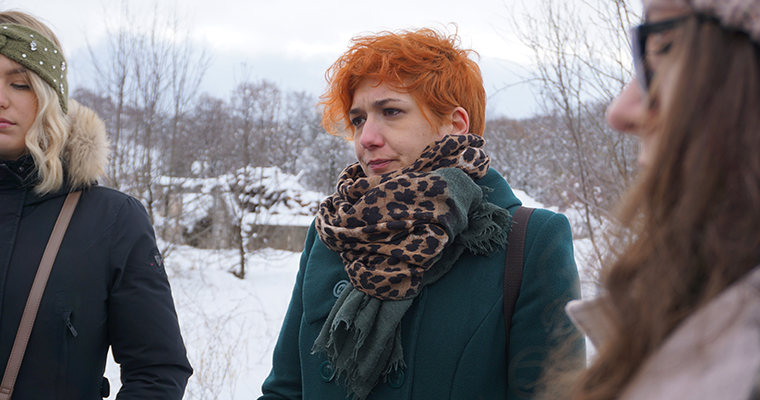
The Mitrovo Polje camp is located 180km away from Šljivovica. It was operational from August 4 1995 until February 1996. There, 450 prisoners experienced similar torture and abuse like those in the Šljivovica camp, whereby many of them were also victims of sexual abuse, as testified by the survivors. One underage person died in this camp as a consequence of beatings.
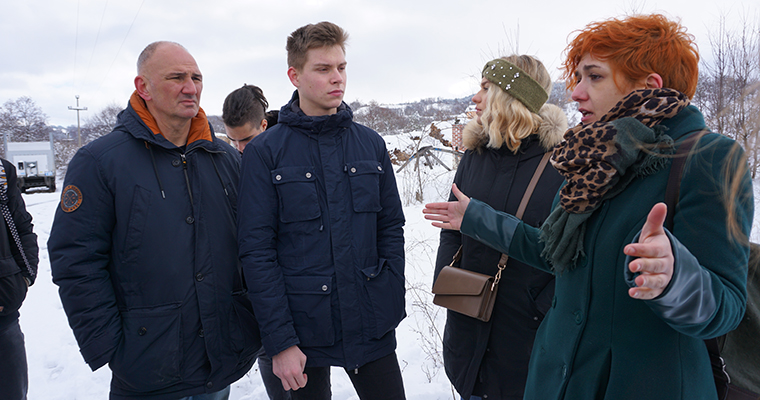
After the lecture, the group visited the locality of the Šljivovica camp, the last activity at this study visit. The camp consisted of two barracks which are almost entirely ruined today. There is no memorialization at the site of the camp to remind of terrors survived by the prisoners.
